 |
|
 |
|
|
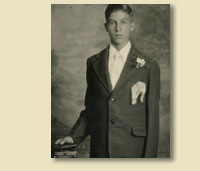 |
His Youth
Born in Youngstown, Ohio, in 1915, Pat, also known as Pascal, grew up in this
working class neighborhood of steel mills and rubber factories. He was the
eldest of seven in a close-knit Italian-American Catholic family. Even when
young, in grade school, he was already known for his sketches of friends
and local characters. He worked odd jobs including being a milkman, working
for a cobbler, spending time backstage at circuses in the summer and working
in a rubber factory. But his interest was always in art, even though his
exposure to art was limited in Youngstown.
|
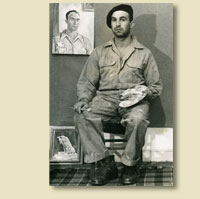 |
His Mature Years
He served from 1942-1945 in the US Army during WWII and was
stationed in Georgia and London, England. It was upon his
return that he started painting on his own and was determined
to make a career of his art. Stimulated by his strong
interest in art, Pat moved out west. He traveled through
Phoenix, Arizona and then to Los Angeles and then finally
settled in San Francisco. He attended the California School
of Fine Arts from 1948-1952 and moved to the Montgomery
Street, an area then known as the “Monkey Block”.
Those were the Bohemian days of San Francisco, associated with
the Beat era. Writers, philosophers, poets and artists frequented
North Beach, and the many cafes and nightclubs became their
gathering spots. He became acquainted with Enrico Banducci,
owner of a nightclub called the hungry i and Pat exhibited
paintings there as well as at the Fox and the Hound, the Iron
Pot and the Black Cat Cafes. He settled in Sausalito, a picturesque
artist community across the bay, just a short drive across
the Golden Gate Bridge from San Francisco where he continued
to work and exhibit.
|
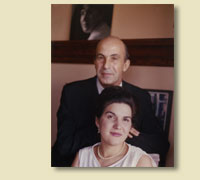 |
His Married Years
It was in 1960 he met the love of his life, Kitty and after
a short courtship, they were married. Later known as Maria,
she would inspire many portraits and was his life long
companion. In 1963, he enjoyed the birth of his daughter,
Angelique with whom he would share his love of art. Also at
this time, he began to exhibit exclusively with Ed Cory,
an art dealer who established two galleries in San Francisco
(at Geary and Jefferson Streets) and later, in Honolulu,
Hawaii, Los Angeles and Paris, France. He was honored with
a nomination for the Presidential Medal of Freedom in 1965
and received an honorable mention by the San Francisco’s Chamber of Commerce for “enhancing
the prestige of San Francisco and the Bay Area as a major world culture center
through his creative energy and work.” As he continued
to paint, his artwork appeared in art museums throughout the
world, and there are many stories of people visiting San Francisco
and returning home with a Cucaro painting.
|
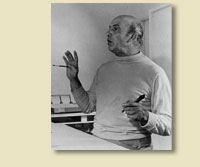 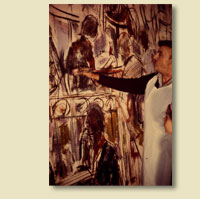 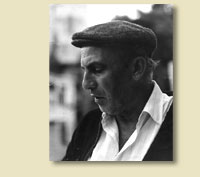 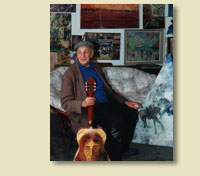
|
The Artist
He traveled extensively, both on his own and later with his
wife and daughter. Each country would inspire him, and he would
do sketches and watercolors while traveling and then do larger
pieces back at his studio at home. In Hawaii, he was inspired
by the palm trees, beaches and sunsets; in Greece, the windmills,
white washed houses and the brilliant blue of the Aegean Sea;
in Japan, the temple grounds and the graceful geishas; in Tahiti, the lovely
women with flowers in their hair. Crowds of people, especially gatherings
at market places, festivals and bazaars, always captivated him. Inspired
by these active and colorful scenes of life, he would paint these “people-people” paintings, one of his favorite subjects. He would also paint circus scenes, portraits, landscapes, horses, café interiors, street scenes and still life. He was always exploring new techniques of painting with watercolors, acrylics and oils and various combinations of the three (mixed medium) and even experimented with lithographs and enamels on copper. “I could never get bored painting!” he
declared.
Although primarily inspired by Impressionists and Expressionists and such artists as Van Gough and Toulouse-Lautrec, he created his own style. He would say, “I am my own school. I paint Cucaro style.” His art evolved over time and was the result of the fusion of many influences and much experimentation. Favoring bright colors and a dynamic brush stroke, he would also incorporate linear definition and open perspectives in his paintings. He often would paint with heavy layers of medium- opaque and dense. Some times, he would paint with thin layers of transparency. For the finish, occasionally, he would leave the surface rough and often, he would finish the work with a thickly varnished surface. He was intrigued by different shapes and surfaces and liked to paint on those that differed from the usual rectangles and canvas. On narrow upright canvas, he’d paint street scenes of Naples, complete with laundry strung between the houses that lined the narrow alleyways. On thin strips of wood of yardsticks and rulers, he did expressive faces. On guitars and violins, he painted clown portraits. On round, oval or triangular shaped canvas or masonite, he did florals with exploding bright colors or galloping horsemen. He even painted on plexiglass, formica and sheets of steel and was even known to draw on paper plates or napkins when the moment arose.
Throughout the years, this prolific artist had one man art shows, benefits, and exhibits. He was even at one time an art dealer and had his own gallery in San Francisco. Amongst his one man art shows were ones held at: the Butler Institute of American Art in Youngstown, Ohio, at Stanford University, Palo Alto, Calif. International Gallery in Chicago and Pittsburg Plan for Art and many more. Amongst the many charities to which he donated the proceeds of the sales of his art were: National Association for the Visually Handicapped, Brevard Alzheimer’s Foundation, SF Aid of Retarded Children, Committee to Rescue Italian Art and Villa Maria Convent and many more. He exhibited at many galleries from the Frame House Art Gallery of Boardman, Ohio to the Cory Galleries, De Medici Gallery, City Gallery, Lyon Art Gallery of San Francisco and in Sausalito at the Village Faire, Shelby Art Gallery and the Connextions Gallery and at many more.
Pat passed away in January, 2004, and his dynamic and expressive nature lives on through his numerous works and continues to give joy to those who have his art in their homes.
As Pat once said, “Some may label me as impressionistic but categorizing a painter limits him and can some times prevent him from finding himself. A painter is always changing, revising his techniques and subjects so that it’s not really fair to put him under a title. He has to change and experiment, to grow and to better his art.”
|
|
|
 |
 |
|
